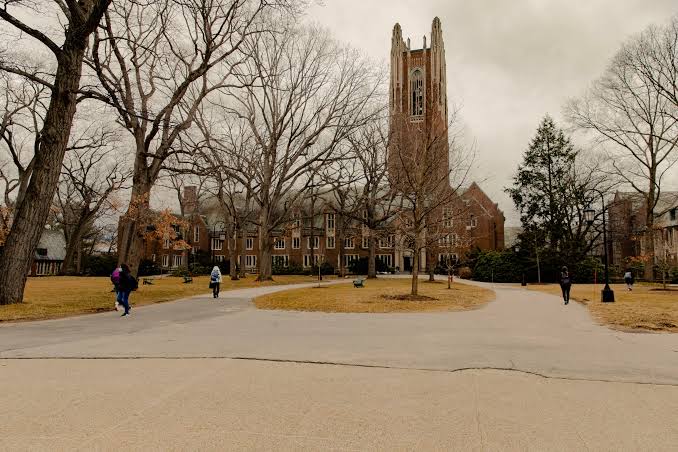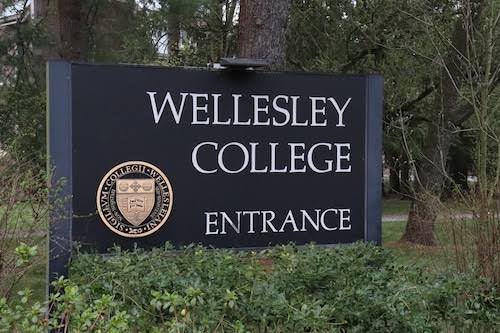
Wellesley College, located in Wellesley, Massachusetts, is one of the most prestigious women’s liberal arts colleges in the United States and a proud member of the historic Seven Sisters. Since its founding in 1870, Wellesley has been dedicated to providing women with an education equal in rigor and opportunity to that available to men, preparing generations of graduates for leadership, scholarship, and service.

Founding and Historical Significance
Wellesley College was established by Pauline and Henry Fowle Durant, visionaries who believed deeply in educational equality for women. Henry Durant’s goal was to prepare women for “great conflicts, for vast reforms in social life,” challenging the 19th-century notion that women were unsuited for rigorous academic work. The college opened its doors in 1875 to 314 students and a pioneering faculty-nearly all women-under the leadership of Ada Howard, its first president and one of the earliest female college presidents in the U.S.
From its inception, Wellesley distinguished itself as a center for women’s scientific study. Between 1875 and 1921, it employed more female scientists than any other American institution, and it was the second college in the country to introduce laboratory science instruction for undergraduates, after MIT. Notably, Sarah Frances Whiting, the first professor of physics and astronomy, conducted some of the earliest X-ray experiments in the U.S. at Wellesley.
Throughout its history, Wellesley has been led by remarkable women who have guided it through challenges and milestones. Leaders like Ellen Fitz Pendleton (who oversaw the rebuilding of the campus after a devastating fire in 1914), Mildred McAfee Horton (director of WAVES during WWII), and Margaret Clapp (Pulitzer Prize-winning historian), have each left a lasting legacy. The college’s resilience and adaptability have allowed it to sustain its mission through social change and educational reform.

Campus and Community
Wellesley’s campus is renowned for its beauty and thoughtful design, situated on a lakeside site in the town of Wellesley, which itself was named in honor of a local benefactor’s wife. The college’s environment has always fostered a sense of optimism, community spirit, and academic seriousness. Over the decades, the campus has grown to include state-of-the-art academic buildings, residence halls, and research centers, while maintaining traditions that connect current students to generations past. Traditions such as Flower Sunday, Hooprolling, and Stepsinging remain integral to campus life, and the College Government, established in 1901, continues to play a central role in student leadership.

Wellesley’s student body is diverse and international, with around 2,300 students from 68 countries and all U.S. states. The college also welcomes nontraditional-age students through the Elisabeth Kaiser Davis Degree Program, further enriching the campus community.

Academic Excellence and Programs
Wellesley’s academic reputation is built on a rigorous liberal arts curriculum and a distinguished faculty, more than half of whom are women. The college offers a dynamic range of majors and minors across the arts, humanities, social sciences, and STEM fields. Interdisciplinary initiatives, such as the INCIPIT program and the Learning and Teaching Center, reflect Wellesley’s commitment to innovation and collaboration.

Popular and Top-Ranked Majors
Wellesley is nationally recognized for excellence in fields such as:
- Film and Photography
- Physics
- Anthropology and Sociology
- International Relations
- English
- Economics
- History
- Chemistry
- Philosophy
- Education

Among the most popular majors are Economics, Information Science, Political Science, Neuroscience, Biology, Psychology, Mathematics, Environmental Science, Sociology, and Chemistry. The college also offers robust programs in the arts, languages, and interdisciplinary studies such as Peace and Justice Studies and Women’s and Gender Studies.

Partnerships and Research
Wellesley maintains a strong academic partnership with MIT, allowing students to cross-register for courses and participate in joint research initiatives. The college also offers exchange programs and study-abroad opportunities, reinforcing its global outlook.
Research is a central part of the Wellesley experience, with students encouraged to engage in independent projects, work alongside faculty, and present their findings at conferences. Centers like the Stone Center for Developmental Services and Studies and the Center for Research on Women support both undergraduate and faculty scholarship.

Leadership, Traditions, and Values
Wellesley’s motto, “Not to be ministered unto, but to minister,” encapsulates its ethos of service and leadership. The college has a long tradition of producing graduates who make a difference in the world, from public service and academia to science, business, and the arts. Its alumnae network is one of the most active and influential in the country.
The college’s leadership history is notable for the succession of women presidents who have shaped its direction and strengthened its financial and academic foundations. Recent leaders have guided the college through centennial celebrations, the launch of new research centers, and the reaffirmation of its mission in the modern era.

Adaptation and Enduring Mission
Over nearly 150 years, Wellesley has remained committed to its founding purpose while adapting to societal changes. Its liberal arts curriculum is continually updated to reflect new knowledge and pedagogical approaches, ensuring that graduates are prepared for a rapidly changing world. The college’s enduring values-academic excellence, leadership, service, and women’s empowerment-remain central to its identity.

Conclusion
Wellesley College stands as a beacon of women’s higher education, renowned for its academic rigor, vibrant traditions, and commitment to developing leaders who serve and shape society. Its history is one of visionary founders, pioneering faculty, and generations of students who have transformed the world. As Wellesley looks to the future, it continues to embody the ideals of opportunity, excellence, and service that have defined it since 1870.